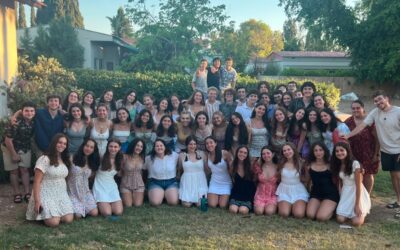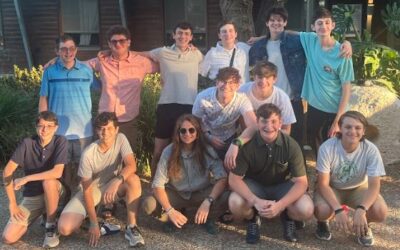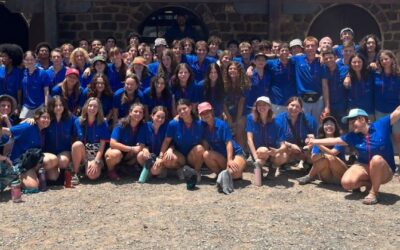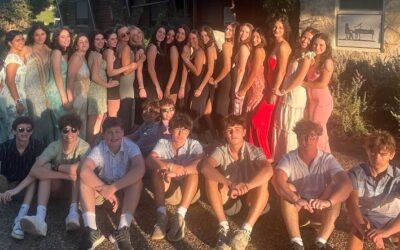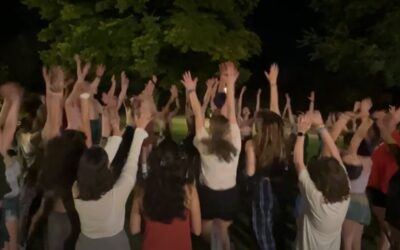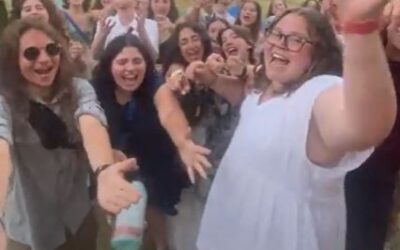By Rabbi Rich Kirschen, Director

Hanukkah is without a doubt a peculiar Holiday. And not because it commemorates a story about a victory where the few prevailed against the many, and the weak won out against the strong. We are all familiar with the theme, “they tried to kill us, we won, let’s eat,” a theme that seems to be all too common in Jewish holidays. Hanukkah is unique because it is a story that we are told takes place in Jerusalem around 200 BCE and yet the first time we have any written evidence of this holiday’s existence (with regard to the miracle of the lights burning for eight nights) is found in the Talmud (in the Tractate of Shabbat) that was written anywhere from 300-500 AD and in Babylonia, far away from Jerusalem. And so, one question we may ask:
“Why do we celebrate Hanukkah when there is there a gap of five hundred years before we have any sources in Jewish literature that talks about this as the festival of lights?”
There are many theories as to why we celebrate Hanukkah for eight nights. One theory goes – that when the Maccabees were fighting the Greeks, they were unable to gain access into the Holy Temple in Jerusalem to celebrate Sukkot. In fact, it took them months fighting against the Greeks in order to re-take the Temple. When they finally were able to enter, it was no longer early autumn, and therefore they had no choice but to celebrate Sukkot in the middle of winter. Hence, the eight days of Hanukkah actually reflect the seven days of Sukkot plus the holiday of Shemini Atzeret which creates an eight-day holiday in winter.
 Undeniably Hanukkah has a peculiar, from out of nowhere entrance into the Talmud with a story about a miracle of light that no one seemed to have mentioned for hundreds of years. Regardless of the numerous historical theories as to why we celebrate this eight-night holiday in the middle of winter; it is an amazing phenomenon to walk around Jerusalem and see the city filled with light at the darkest time of the year. There is something about a Jerusalem winter that is extra dark and cold up here in the mountains (we are three thousand feet above sea level). A Jerusalem winter is an experience in feeling like you can never ever get warm even if you are inside your home. We have little insulation in our stone homes and no one keeps the heat on all night. If you want to stay warm in Jerusalem during the winter, I suggest getting yourself a giant thick comforter and some Gottkes (Yiddish for long underwear). So, in this city made of Jerusalem stone, that is cold and chilly, it is incredibly special to see every home with a menorah radiating light whether it is in their window or for many families outside their front door.
Undeniably Hanukkah has a peculiar, from out of nowhere entrance into the Talmud with a story about a miracle of light that no one seemed to have mentioned for hundreds of years. Regardless of the numerous historical theories as to why we celebrate this eight-night holiday in the middle of winter; it is an amazing phenomenon to walk around Jerusalem and see the city filled with light at the darkest time of the year. There is something about a Jerusalem winter that is extra dark and cold up here in the mountains (we are three thousand feet above sea level). A Jerusalem winter is an experience in feeling like you can never ever get warm even if you are inside your home. We have little insulation in our stone homes and no one keeps the heat on all night. If you want to stay warm in Jerusalem during the winter, I suggest getting yourself a giant thick comforter and some Gottkes (Yiddish for long underwear). So, in this city made of Jerusalem stone, that is cold and chilly, it is incredibly special to see every home with a menorah radiating light whether it is in their window or for many families outside their front door.
Holidays aren’t always about what actually happened, they are more part of our story than our his-story. They help us weave a coherent narrative that connects us…and that connection somehow raises the temperature of community and continuity. This year when I walk around Jerusalem in the darkest time of the year, there is a beautiful feeling of light connecting family to family regardless of the level of religious observance or political affiliation. There is the power of an interconnecting story, while who’s beginnings are unclear, brings us together through warmth and light.

